Rare Death Valley 'super bloom' carpets desert with color
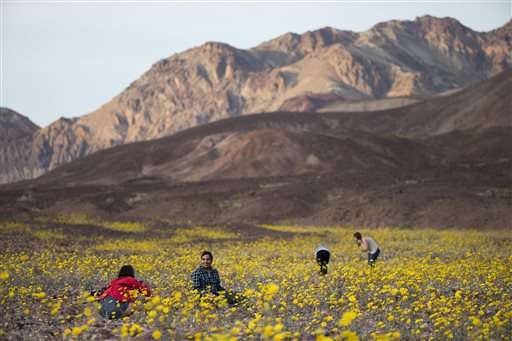
A rare "super bloom" of wildflowers in Death Valley National Park has covered the hottest and driest place in North America with a carpet of gold, attracting tourists from all over the world and enchanting visitors with a stunning display from nature's paint brush.
Here are some things to know about the once-in-a-decade event:
WHAT'S SO SPECIAL ABOUT WILDFLOWERS IN DEATH VALLEY?
Death Valley National Park holds a world record for the hottest temperature ever recorded: 134 degrees Fahrenheit (57 degrees Celsius) on July 10, 1913. It's also home to the lowest elevation in North America, a place that's 282 feet below sea level, called Badwater Basin.
Every spring, some wildflowers bloom before it gets scorching hot, but the abundance of flowers this year is extremely unusual and happens about once every 10 years.
The last time there was a bloom of this magnitude was in 2005, and the time before that was in 1998.
WHY ARE SO MANY WILDFLOWERS BLOOMING?
Death Valley's average annual rainfall is 2 inches a year, and sometimes, it gets no rain at all.
This season, the park got three very rare storms in the first two weeks of October that dropped more than 3 inches of rain in some parts of the valley. That was enough to trigger the growth of millions of wildflower seeds that have been dormant, awaiting significant rainfall.
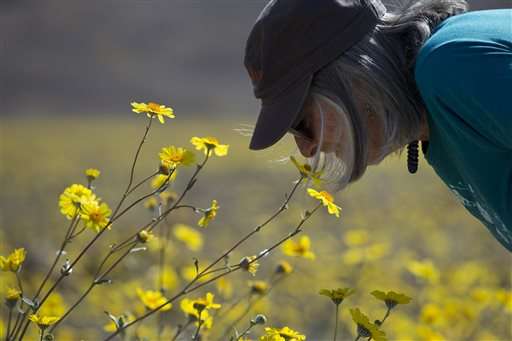
No one knows how long seeds can wait for rain, but some flowers blossomed in 2005 that had never been seen in the park—indicating their seeds had been dormant for many years.
WHAT KINDS OF FLOWERS CAN I SEE?
The most abundant and eye-catching wildflower is the aptly named desert gold, a large, bright yellow bloom that looks like a daisy. The stems this year are growing to waist height, and the flowers cover entire hillsides and vast areas of the valley floor in the southern section of the park. These flowers are easily enjoyed from the car.
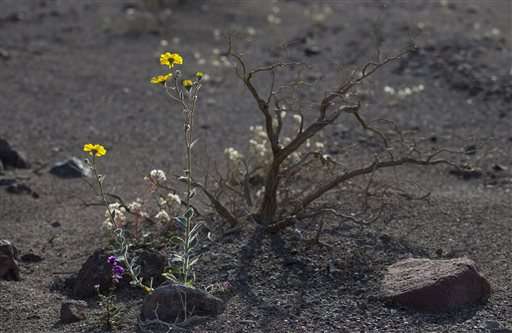
Patient sightseers who get out of their cars can see many more species. More than 20 species of wildflower bloom in the park at various elevations.
Some of the other more common flowers include the deep purple phacelia; the desert five-spot, a delicate pink flower with five burgundy spots around its center; the gravel ghost, a delicate white flower that appears to be floating aboveground like a ghost because its stem is so thin it's almost invisible; and various types of desert primrose.
WHERE IS THE BLOOM LOOKING THE BEST?
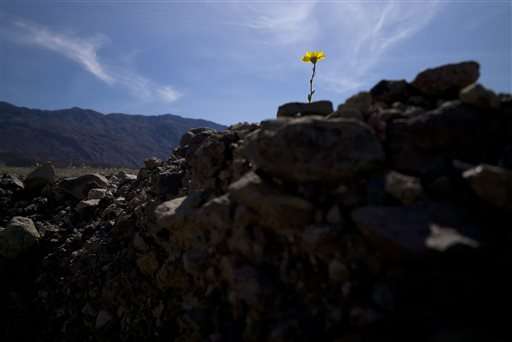
Now, the best flower show is at the south end of Death Valley National Park along Badwater Road, south of Furnace Creek. As the temperature rises, those flowers will fade, and the bloom will move north and to higher elevations.
The National Park Service updates information on the best spots to see flowers throughout the bloom. For updates, visit www.dvnha.org or www.nps.gov/deva .
HOW LONG WILL THE WILDFLOWERS BLOOM?
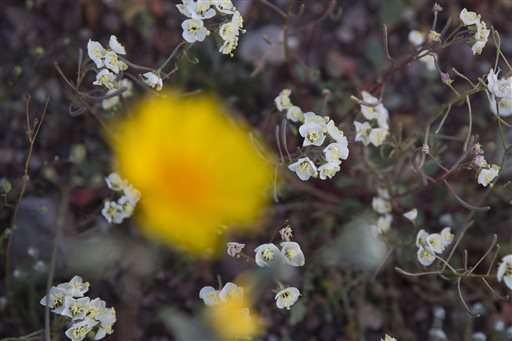
The show won't last forever. Most of the flowers will wither in the next few weeks as temperatures start to rise.
Some flowers may be around as late as June at higher elevations, but those won't be as easy to see from a car and could require hiking.
-
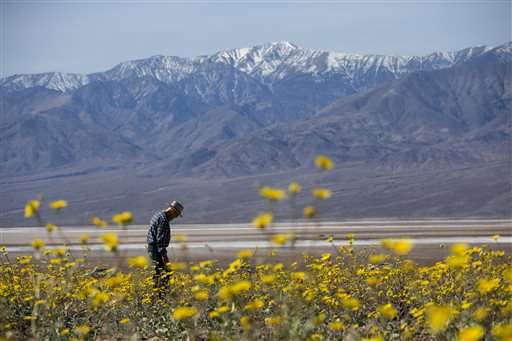
In this Wednesday, Feb. 24, 2016 photo, Michael Gilbert walks through a field carpeted with wildflowers near Badwater Basin in Death Valley, Calif. A rare "super bloom" of wildflowers in Death Valley National Park has covered the hottest and driest place in North America with a carpet of gold, attracting tourists from all over the world and enchanting visitors with a stunning display from nature's paint brush. The display happens about once every 10 years and the last time tourists saw so many spring wildflowers was in 2005. (AP Photo/Jae C. Hong) -
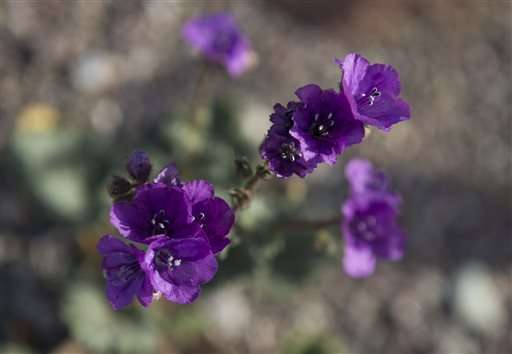
In this Wednesday, Feb. 24, 2016 photo, Notchleaf Phacelia bloom near Badwater Basin in Death Valley, Calif. Death A rare "super bloom" of wildflowers in Death Valley National Park has covered the hottest and driest place in North America with a carpet of gold, attracting tourists from all over the world and enchanting visitors with a stunning display from nature's paint brush. Patient sightseers who get out of their cars can see many more species. More than 20 species of wildflower bloom in the park at various elevations. (AP Photo/Jae C. Hong) -
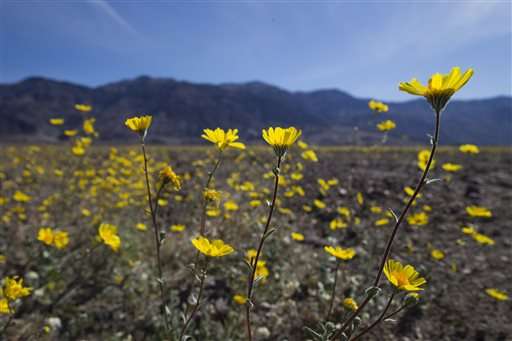
In this Wednesday, Feb. 24, 2016 photo, wildflowers bloom near Badwater Basin in Death Valley, Calif. A rare "super bloom" of wildflowers in Death Valley National Park has covered the hottest and driest place in North America with a carpet of gold, attracting tourists from all over the world and enchanting visitors with a stunning display from nature's paint brush. (AP Photo/Jae C. Hong) -
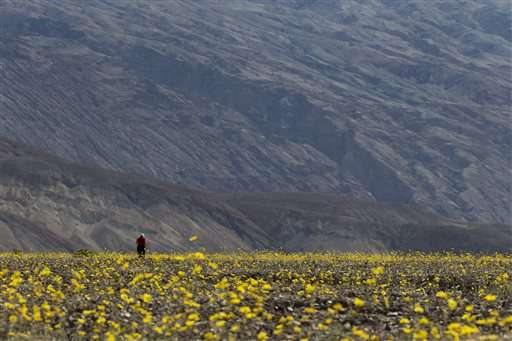
In this Wednesday, Feb. 24, 2016 photo, a tourist walks through a field carpeted with wildflowers near Badwater Basin in Death Valley, Calif. A rare "super bloom" of wildflowers in Death Valley National Park has covered the hottest and driest place in North America with a carpet of gold, attracting tourists from all over the world and enchanting visitors with a stunning display from nature's paint brush. (AP Photo/Jae C. Hong)
© 2016 The Associated Press. All rights reserved.




















